At the beginning of the 1950s, space travel only existed in science fiction novels. Scientists who claimed that this travel would one day be possible were often ridiculed by their community. However, several technological improvements have made space travel possible. Space exploration became a reality thanks to the inventions made during World War II.
After the war, space travel was a dream, but not one that governments planned to make a reality. The quest for space began because of research on weapons. During the war, rocket-propelled missiles were developed. These V-2 missiles had long range (350 kilometres) and travelled at a speed of about 5000 km/h. With this development, firing missiles no longer depended on aviation.
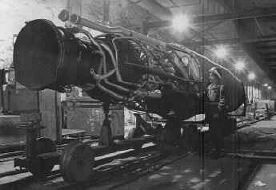
A V-2 missile
The arms race during the Cold War encouraged technological advancements in rocketry which paved the way for space travel. Since the USSR had not mastered nuclear power at the end of the war, it organized its arms race on rocket technology. One of the USSR’s primary goals was to develop an intercontinental missile.
On October 4, 1957, the USSR sent Sputnik 1 into space, the first artificial satellite. This marked the beginning of space exploration. The USSR had just accomplished an enormous technological achievement that captured global attention.
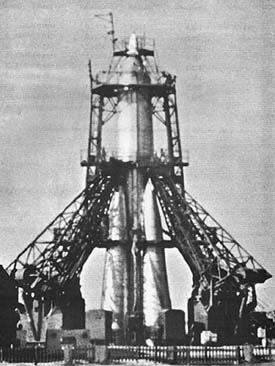
The Launch of Sputnik 1
Coming out of the Cold War, the United States viewed the launch of Sputnik 1 as a humiliation. The successful launch by the Soviets fed existing tensions between the two global powers and pushed them into a space exploration race. Each aerospace success was seen as a symbol of economic and political supremacy.
Both the United States and the USSR launched extensive space exploration programs. The frantic race led to the rapid development of space technologies.
The USSR saw its achievements as the vindication of communism. Maintaining their technological advance, the Soviets launched another satellite, Sputnik 2, on November 3, 1957, which carried the first living being into space.
The now famous dog, Laika, died about 7 hours after launch, from stress and overheating, likely caused by a failure in the capsule’s temperature regulation system. Given this outcome, the Soviet Union reported that it was not ready to send a human into space
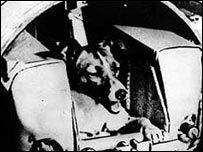
Laïka
Following the launch of Sputnik 1, the United States set up a team intended to conduct their first space launch which took place on January 31, 1958, with the launch of Explorer 1.
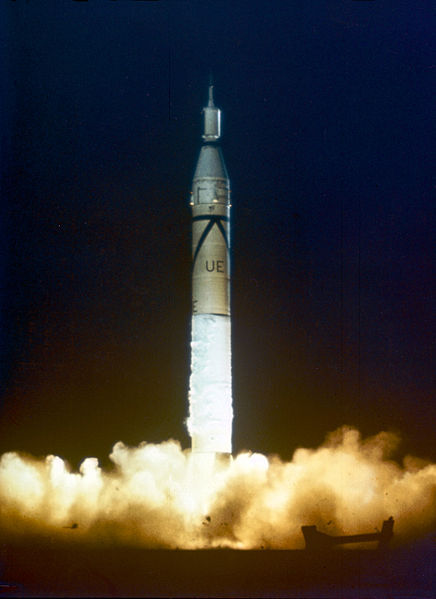
The launch of the Explorer 1 probe
Despite American efforts, Soviet scientists had a significant lead. The USSR created the Luna program to study the Moon, and on January 2, 1958, Luna 1 probe flew over the Moon. On September 13 of the same year, Luna 2 landed on the Earth’s natural satellite.
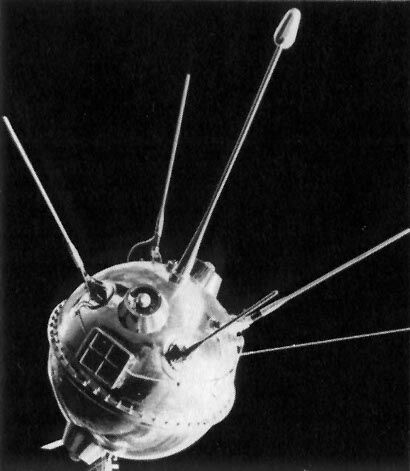
The Luna 1 probe
Towards the end of September 1958, the Luna 3 mission surprised humanity by sending back images of the Moon’s hidden side. For the first time, it was possible to see what this side looked like.
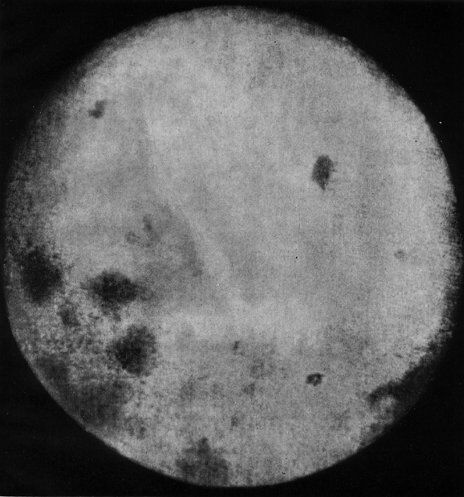
One of the photos of the hidden side of the Moon, taken by Luna 3
The USSR relaunched its Sputnik project aiming to send humans into space. Several trials with dogs had proved successful, as the animals survived their journeys.
During this time, in the United States, the government invested very large amounts of money in space exploration and in 1958, the government created its space agency: the National Aeronautics and Space Association (NASA). The Americans also wanted to send a person into space so the Mercury program was created. In January 1961, a chimpanzee was sent into space.
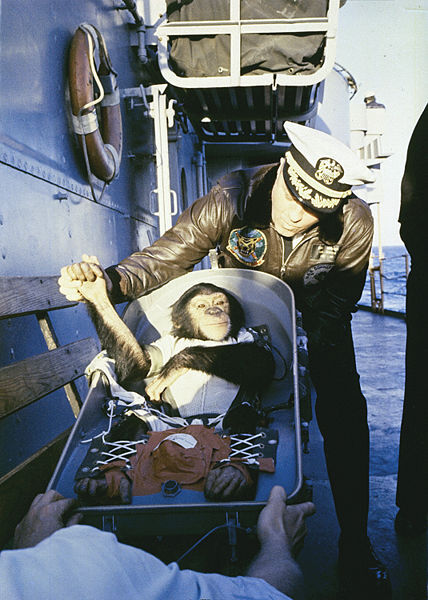
A Mercury program chimpanzee
Despite American efforts, it was the Soviets who accomplished this feat first. On April 12, 1961, Yuri Gagarin became the first man to travel to space. He made a 1 hour 48-minute flight at an altitude of 250 kilometres. This event once again confirmed the USSR’s progress in space exploration.
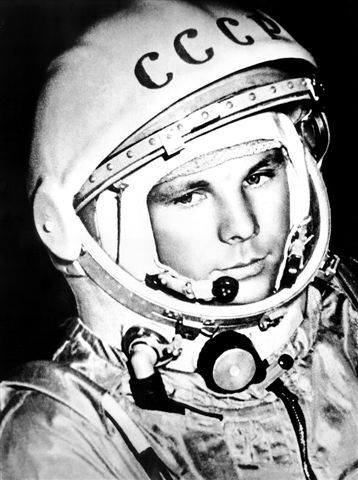
Yuri Gagarine
The first American astronaut, Alan Shepard, made an initial 15-minute flight on May 5th of the same year.
On May 24, 1961, United States President John F. Kennedy announced that humans would walk on the Moon before the end of the decade, launching the Apollo lunar program. The United States was working on two space programs: Apollo and Gemini. The first was dedicated to the Moon, while the second explored orbital voyages.
The Soviet Union pursued its Luna program, creating fierce competition between the two countries: which nation was going to succeed in sending humans to the Moon first? It was on February 20, 1962 that an American astronaut made the orbital trip around the Earth three times, in less than five hours.
In March 1965, a Soviet astronaut conducted a first spacewalk and a few months later, the Americans accomplished the same feat. At the same time, the Americans began to send out probes to study the solar system. The Mariner program sent probes to fly over Venus in December 1962, and Mars in January 1965.
Launched by President Kennedy, the Apollo project was carried out through several missions, all focused on landing astronauts on the Moon. The very first mission, Apollo 1, ended abruptly when a fire broke out in the space shuttle during a training exercise and all the astronauts lost their lives.
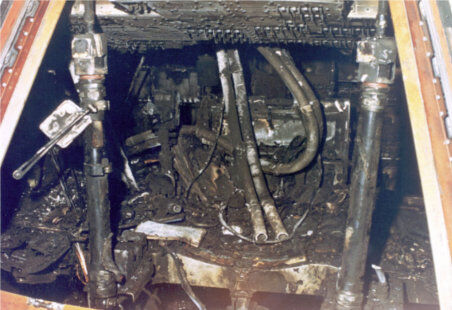
The Apollo 1 space shuttle, after the fire
One of the first great successes of the Apollo program was the Apollo 7 mission. In October 1968, astronauts made a 10-day trip in orbit around the Earth.
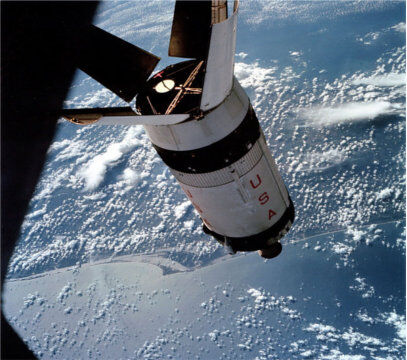
Apollo 7
Later that year, the Apollo 8 crew successfully orbited around the Moon.
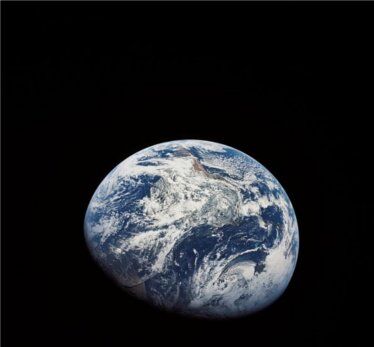
Image of the Earth, taken during the Apollo 8 mission
The success of these missions put the United States ahead of the USSR in the race to the Moon.
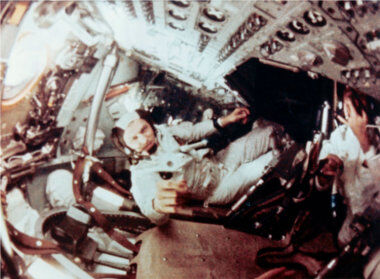
Photo taken on board the Apollo 8 space shuttle
The Americans’ lead was cemented by subsequent missions, such as Apollo 9 and Apollo 10. These missions carried out Moon landing tests which led to the program’s greatest success, the Apollo 11 mission. Leaving on July 16, 1969, the crew landed on the Moon on July 20th. As the world watched, Neil Armstrong stepped on to the Moon, an event watched by millions, confirming the Americans’ had won the race. President Kennedy’s wager was won: humans had walked on the Moon before the end of the decade.
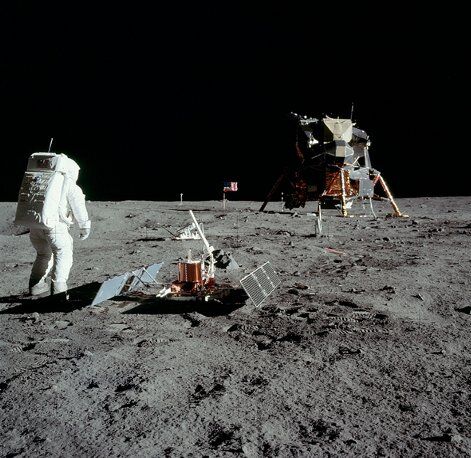
Man walks on the Moon
After these successful Apollo missions, the Americans continued to send crews to the Moon. Out of 17 Apollo missions, only the 13th failed. Soviet astronauts never manage to land on the Moon.
The Détente put an end to the fierce competition between the two nations. In addition, the economic crises of the 1970s slowed space exploration. Certain space projects, including Apollo, were abandoned because they were very expensive.
American-Soviet cooperation in space was symbolized in a handshake between two astronauts who docked their space shuttles together. Both the USSR and the United States put their missions to the Moon aside, with the United States focusing on frequent round trips in the Earth’s orbit while the Soviets built space stations
The end of the Cold War did not mark the end of space exploration. In 1984, astronauts successfully completed the first ever untethered spacewalk using the Manned Maneuvering Unit (MMU). The astronauts completed a five-hour spacewalk, more than 100 metres from the shuttle.
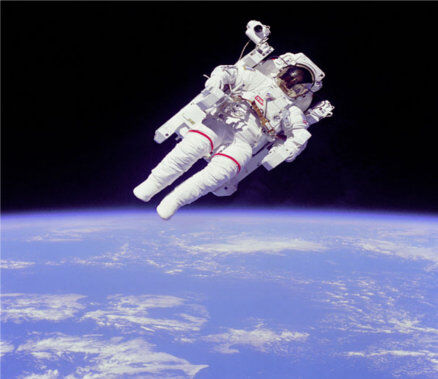
The MMU allowed astronauts to go into space without being tethered to their shuttle.
Despite past achievements, space missions remain risky.
-
On January 28, 1986, the space shuttle Challenger exploded less than two minutes after takeoff, killing all seven astronauts on board.
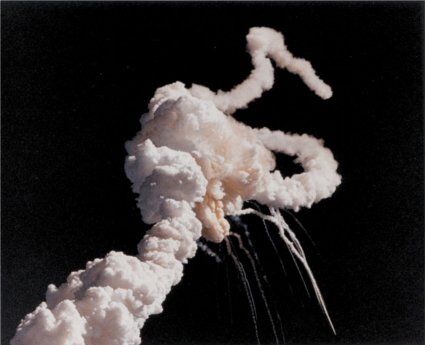
Explosion of the space shuttle Challenger
More recently, the space shuttle Columbia disintegrated during its return to the Earth on February 1, 2003.
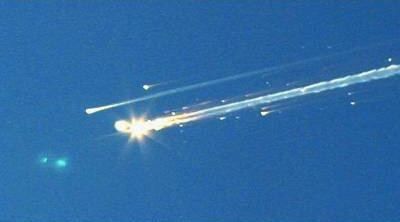
Space Shuttle Columbia
In both cases, the NASA program was thoroughly shaken by these tragedies.
In February 1986, the orbital station MIR was launched by the Russians. This research station was inhabited for almost 10 years without interruption, until 1999. Eventually deemed obsolete and potentially dangerous, MIR was destroyed in 2001.
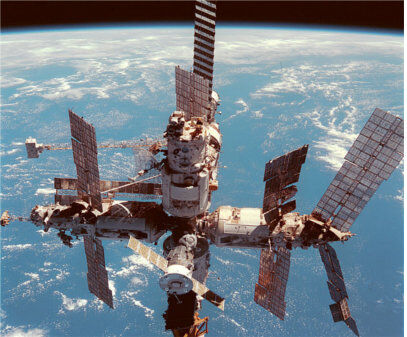
The MIR space station
The MIR station was replaced by an international space station (ISS). Initiated in 1998, its construction was the result of the collaboration of several countries.
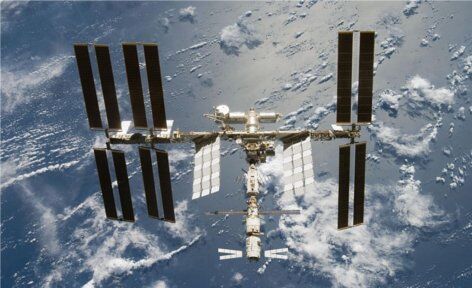
The international space station
In recent years, space exploration has focused on Mars. The ultimate goal of space agencies is a successful flight to Mars with humans onboard.
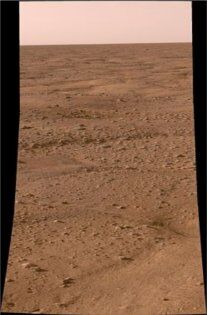
One of the images taken on Mars
Today, there are thousands of artificial satellites travelling in the Earth’s orbit. These are used for weather forecasting, telecommunications, wireless telephone services, satellite positioning (GPS), Earth observation, etc.
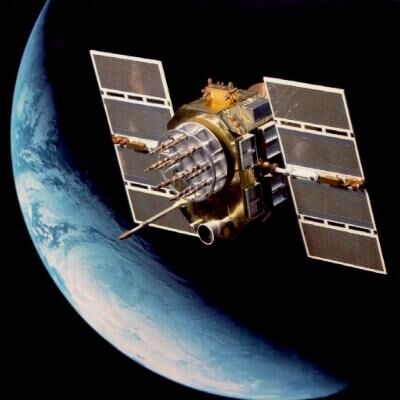
One of the thousands of satellites in orbit around the Earth
A new form of tourism appeared at the beginning of the 21st century with the first tourist trip into space made in 2001.